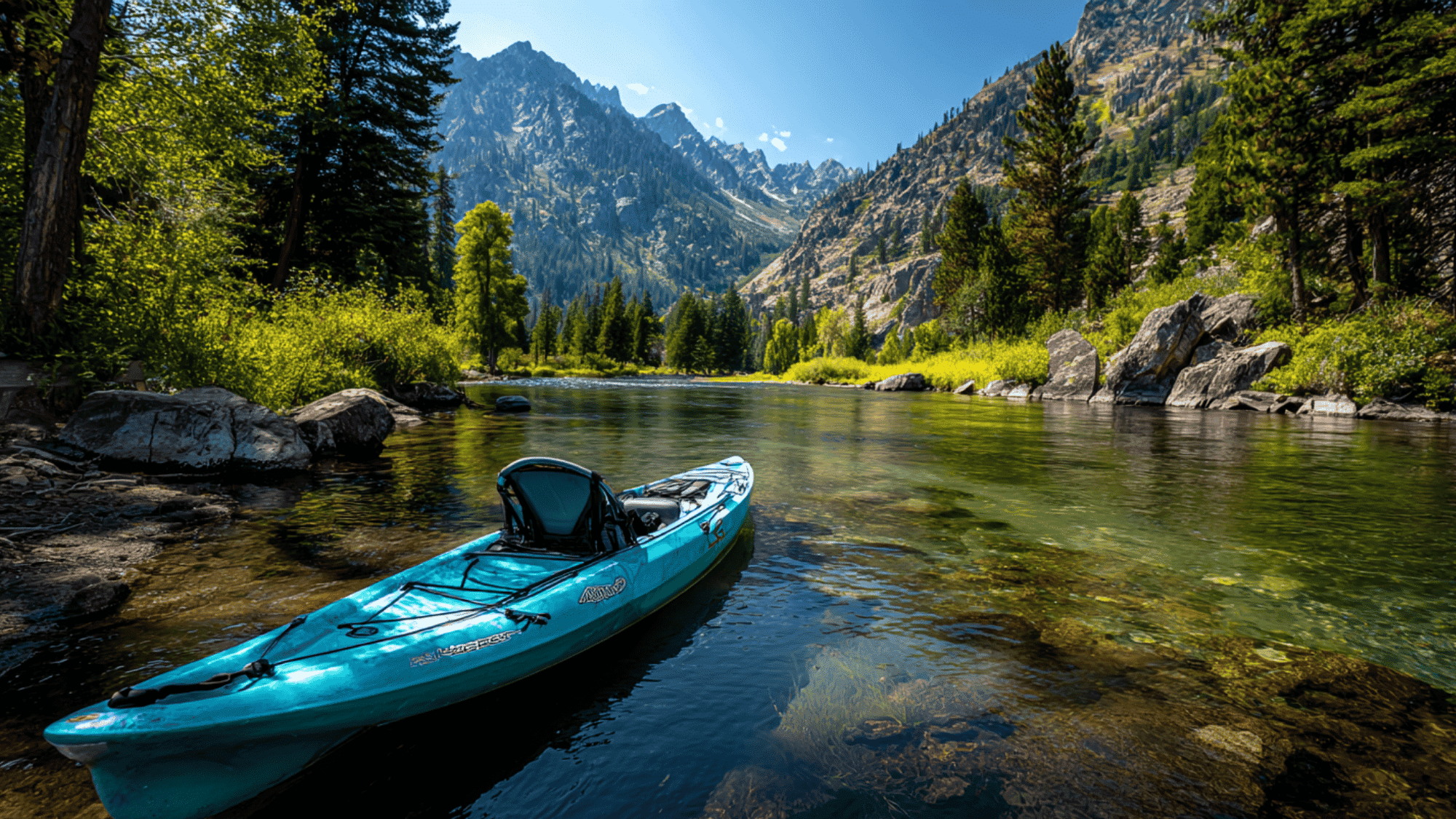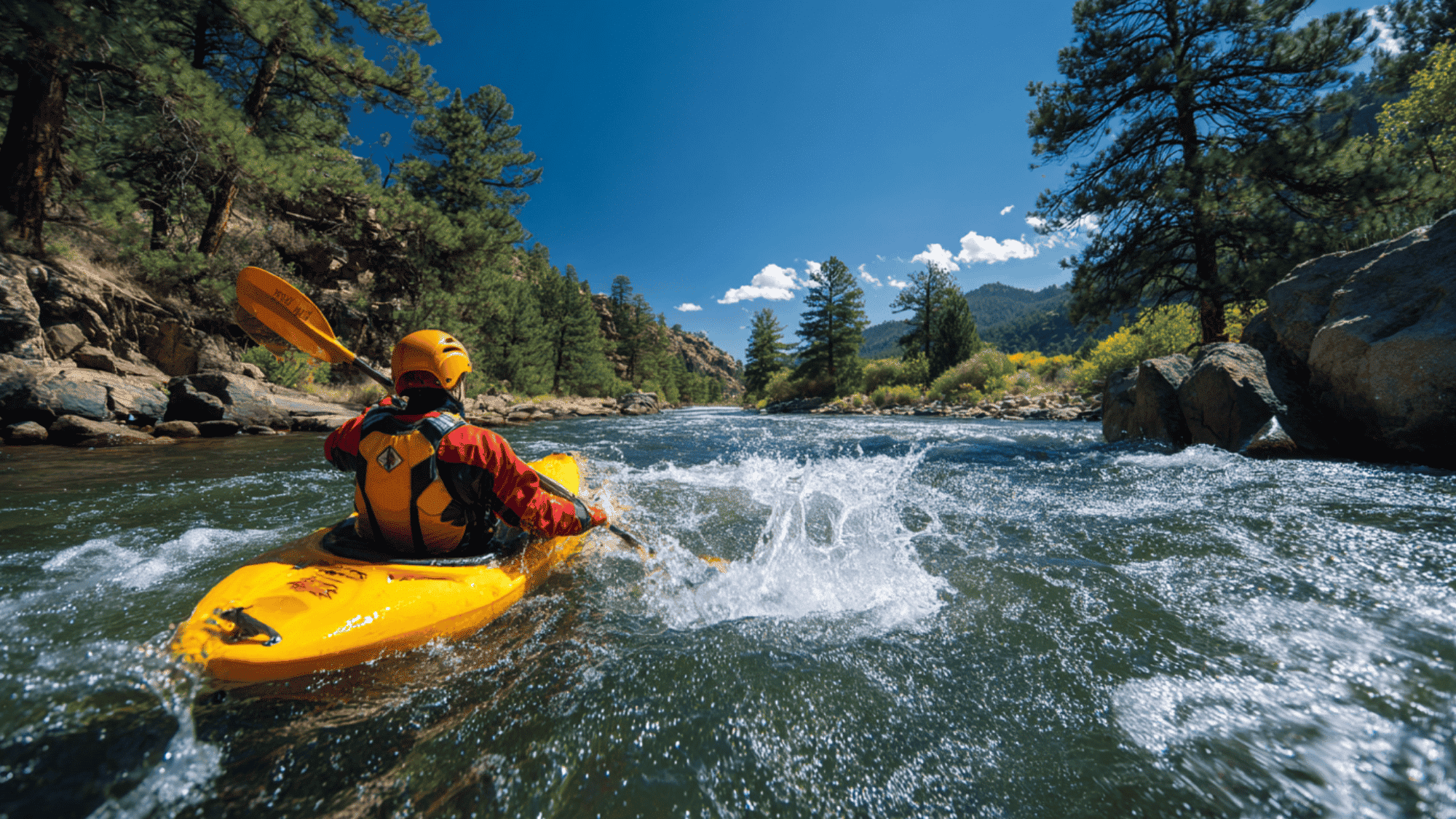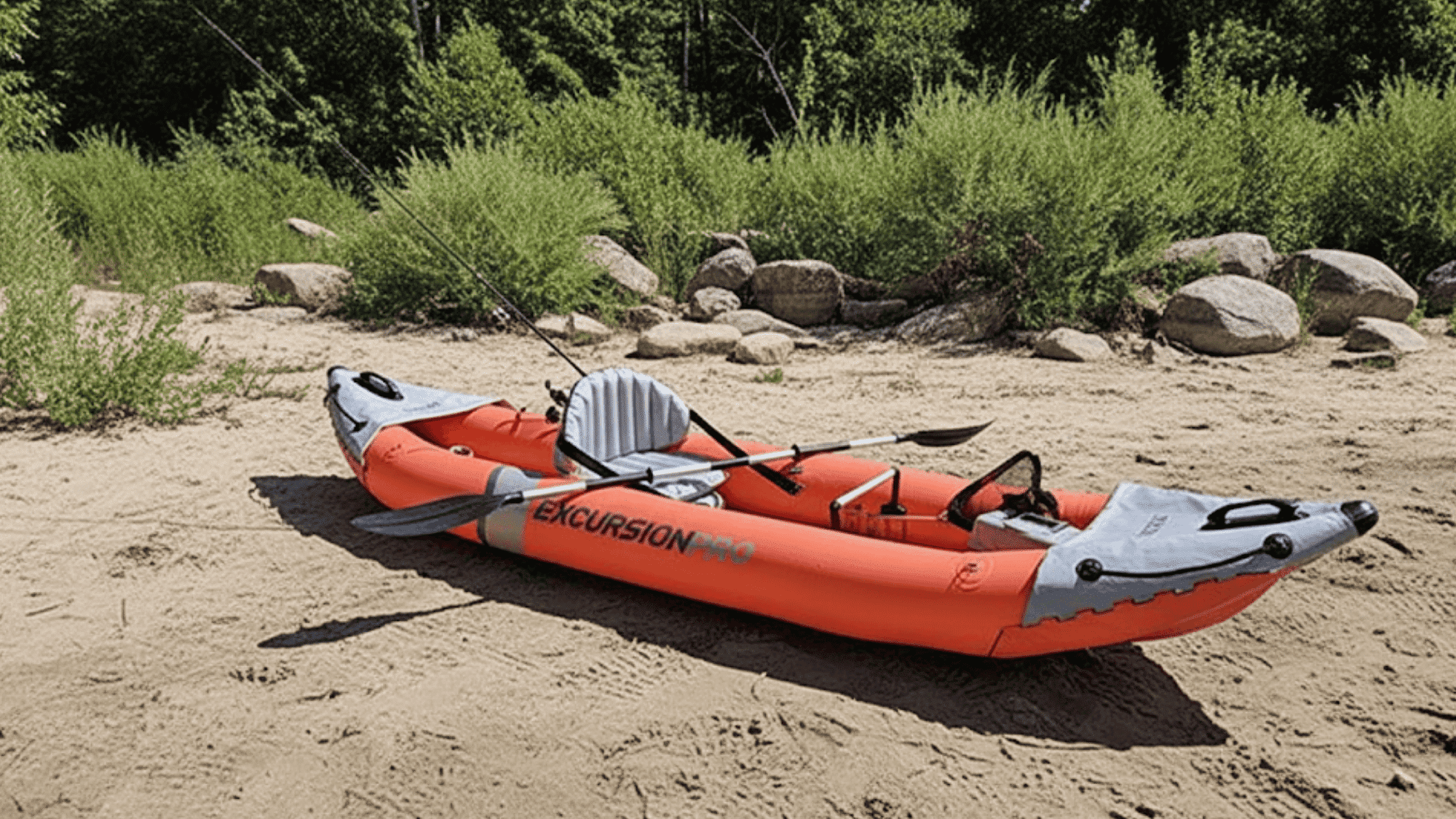Choosing the right kayak paddle size can make or break your time on the water. The perfect paddle improves comfort, efficiency, and control, while the wrong one can leave you sore and frustrated.
Many paddlers overlook how factors like height, kayak width, and paddling style determine ideal paddle length.
This guide breaks it all down for you, with a complete paddle size chart, insights by kayak type, and tips on blade shapes and materials.
If you’re a beginner or an experienced kayaker, you’ll learn how to find the perfect paddle fit for your body, boat, and paddling style.
Why Paddle Size Matters Before You Hit the Water
Before diving into measurements and charts, it’s important to understand why paddle size makes such a difference.
The right paddle doesn’t just help you move efficiently; it affects your posture, endurance, and even safety.
A properly sized paddle reduces shoulder strain, keeps your strokes smooth, and helps maintain balance across different water conditions.
Once you know why paddle length matters, it’s easier to choose one that suits your kayak type, body height, and paddling technique.
Paddle Size Depending on the Type of Kayak
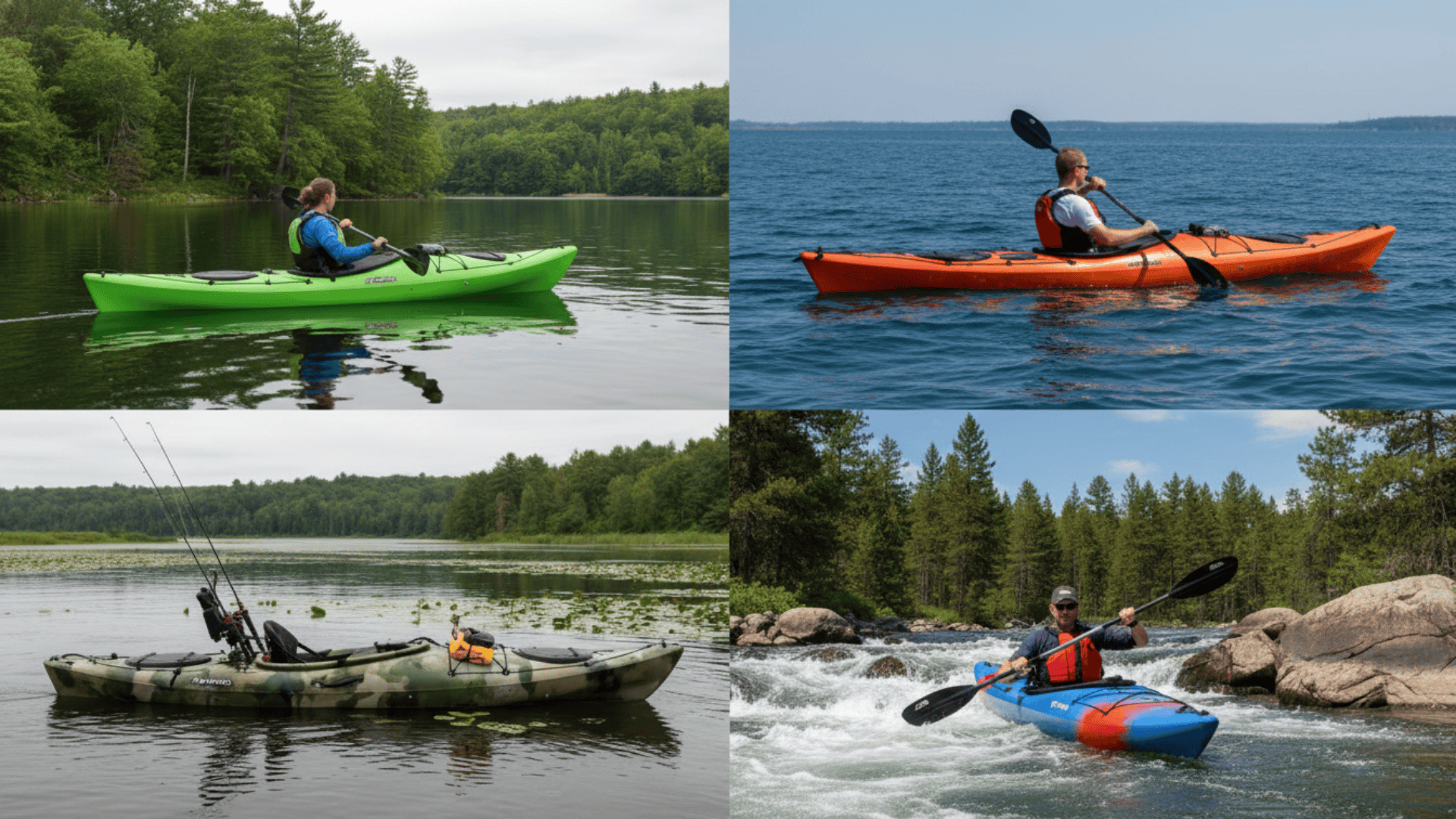
Not all kayaks are built the same, and neither should your paddle be. The type of kayak you use affects the paddle length you need, mainly because of the kayak’s width and your seating height.
1. Recreational Kayaks
These kayaks are usually wider, around 28 to 32 inches. A longer paddle between 230 and 250 cm helps clear the sides easily and maintain smooth, relaxed strokes for casual paddling on lakes and calm rivers.
2. Touring or Sea Kayaks
Touring kayaks are narrower, typically 22 to 26 inches. A shorter paddle between 210 and 230 cm provides efficient, controlled strokes for covering long distances with less fatigue and greater precision in open water.
3. Fishing or Sit-on-Top Kayaks
Fishing kayaks have wide beams and raised seats. A paddle length between 240 and 260 cm offers better reach across the width of the kayak, ideal for stability, control, and comfort when casting or maneuvering from a higher position.
4. Whitewater Kayaks
Whitewater kayaks are compact and agile. A short paddle between 188 and 200 cm allows quick, powerful strokes needed for navigating rapids, turning sharply, and maintaining balance in fast-moving, technical water environments.
Paddle Size Chart Based on User Height
Finding the right paddle length depends on both your height and your kayak’s width. A properly sized paddle lets you dip the blades smoothly into the water without overreaching or striking the kayak’s sides.
Use the chart below as a reliable guide.
| Paddler Height | Kayak Width | Kayak Width 23–28″ | Kayak Width 28–32″ | Kayak Width > 32″ |
|---|---|---|---|---|
| Under 5′5″ | 210 cm | 220 cm | 230 cm | 240 cm |
| 5′5″ – 5′11″ | 215 cm | 225 cm | 235 cm | 245 cm |
| Over 6′0″ | 220 cm | 230 cm | 240 cm | 250 cm |
Tips for using the chart:
- If your kayak has a raised seat, add about 5 cm to the suggested paddle length.
- If you prefer a low-angle paddling style, go slightly longer for smoother, more relaxed strokes.
- For a high-angle style, choose a slightly shorter paddle for quicker, more powerful movements.
- When between sizes, test both lengths to see which feels more natural and comfortable during your stroke.
Types of Paddles and How to Choose
Not all paddles are created equal. Choosing the right type depends on your paddling frequency, budget, and performance goals.
The right material and design can significantly affect your comfort, efficiency, and endurance on the water.
1. Fixed-Length Paddles

These paddles have a set length and are ideal for paddlers who know exactly what size they need.
They are typically lighter and stronger, offering consistent performance for regular kayakers who value precision and reliability.
2. Adjustable-Length Paddles
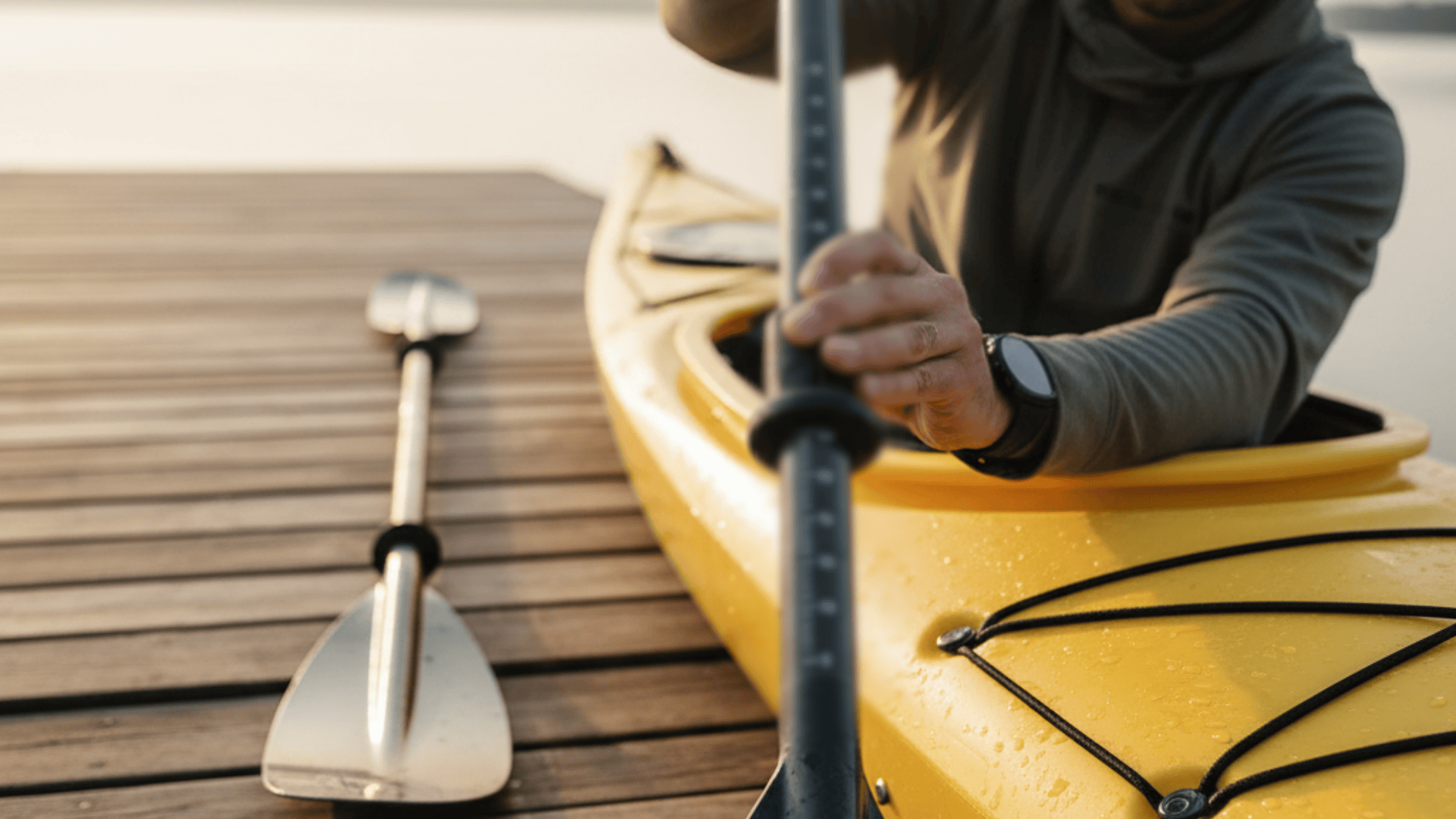
Adjustable paddles let you modify the length, usually within a 10 cm range. They are perfect for those who share a kayak or paddle in different conditions.
This flexibility ensures the best reach and comfort for multiple kayak types.
3. Paddle Materials
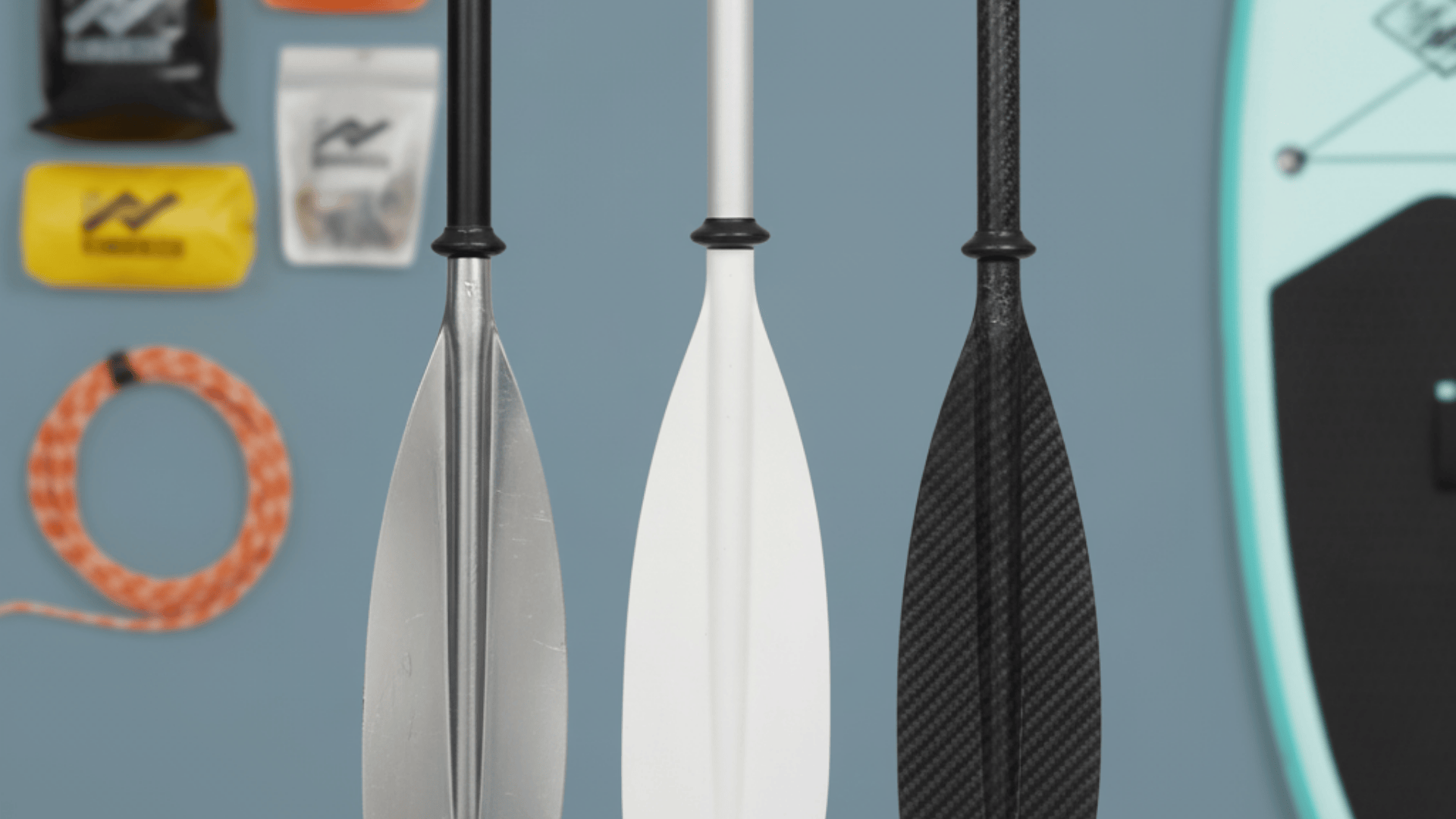
Paddle shafts and blades are made from materials like aluminum, fiberglass, or carbon fiber. Aluminum is durable and affordable.
Fiberglass offers a balance of weight and strength, while carbon fiber delivers top performance with minimal fatigue.
4. Shaft Design
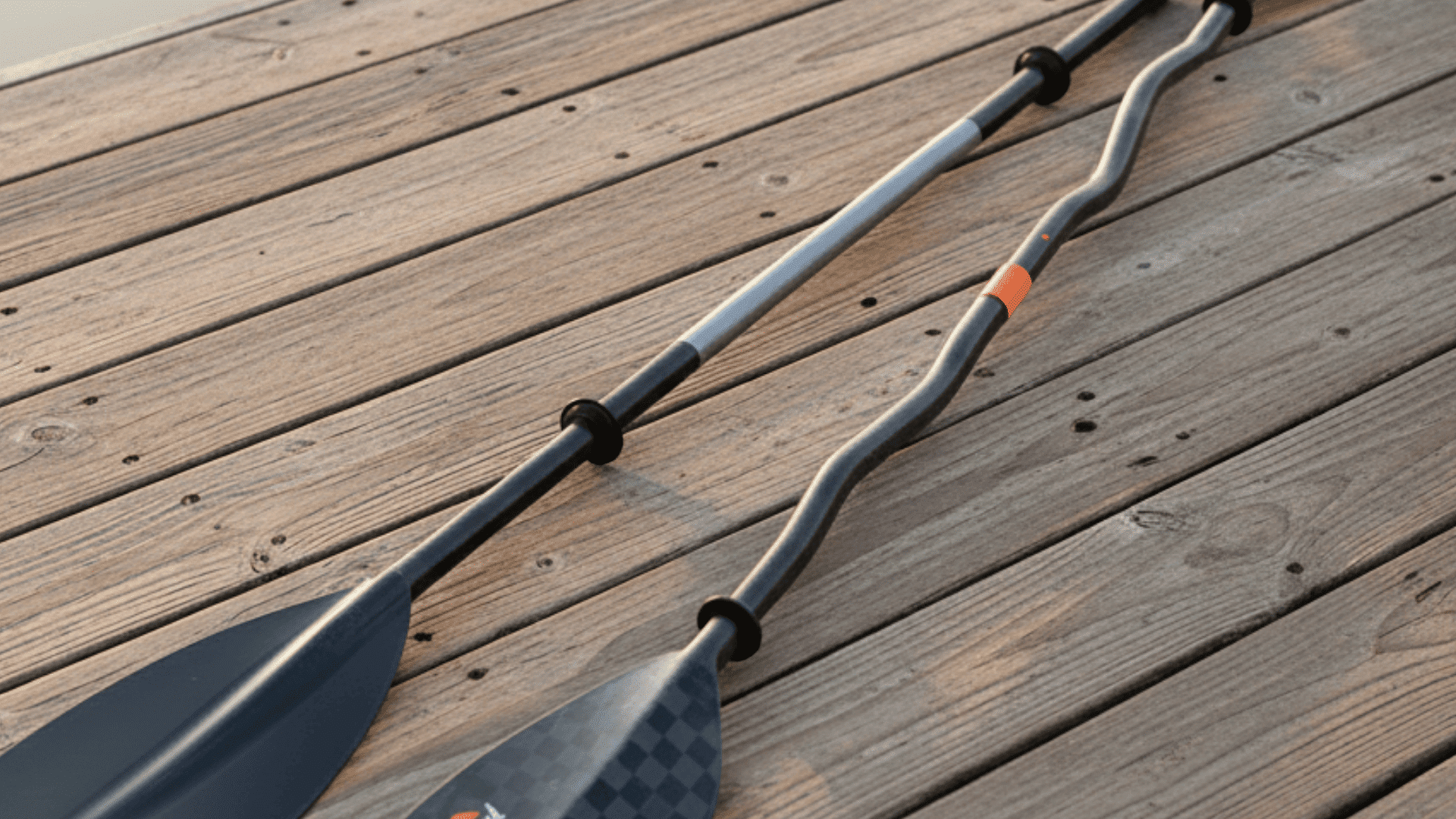
Straight shafts are common and easy for beginners. Bent shafts reduce wrist strain and improve efficiency during long trips.
The choice depends on your comfort, hand position, and paddling endurance preferences.
How to Choose
Balance your budget, performance needs, and paddling style. Beginners often start with fiberglass or aluminum paddles, while experienced paddlers prefer lightweight carbon for efficiency.
Always test grip comfort, weight, and balance before deciding on your ideal paddle.
Paddle Blade Shapes and Where They Work Best
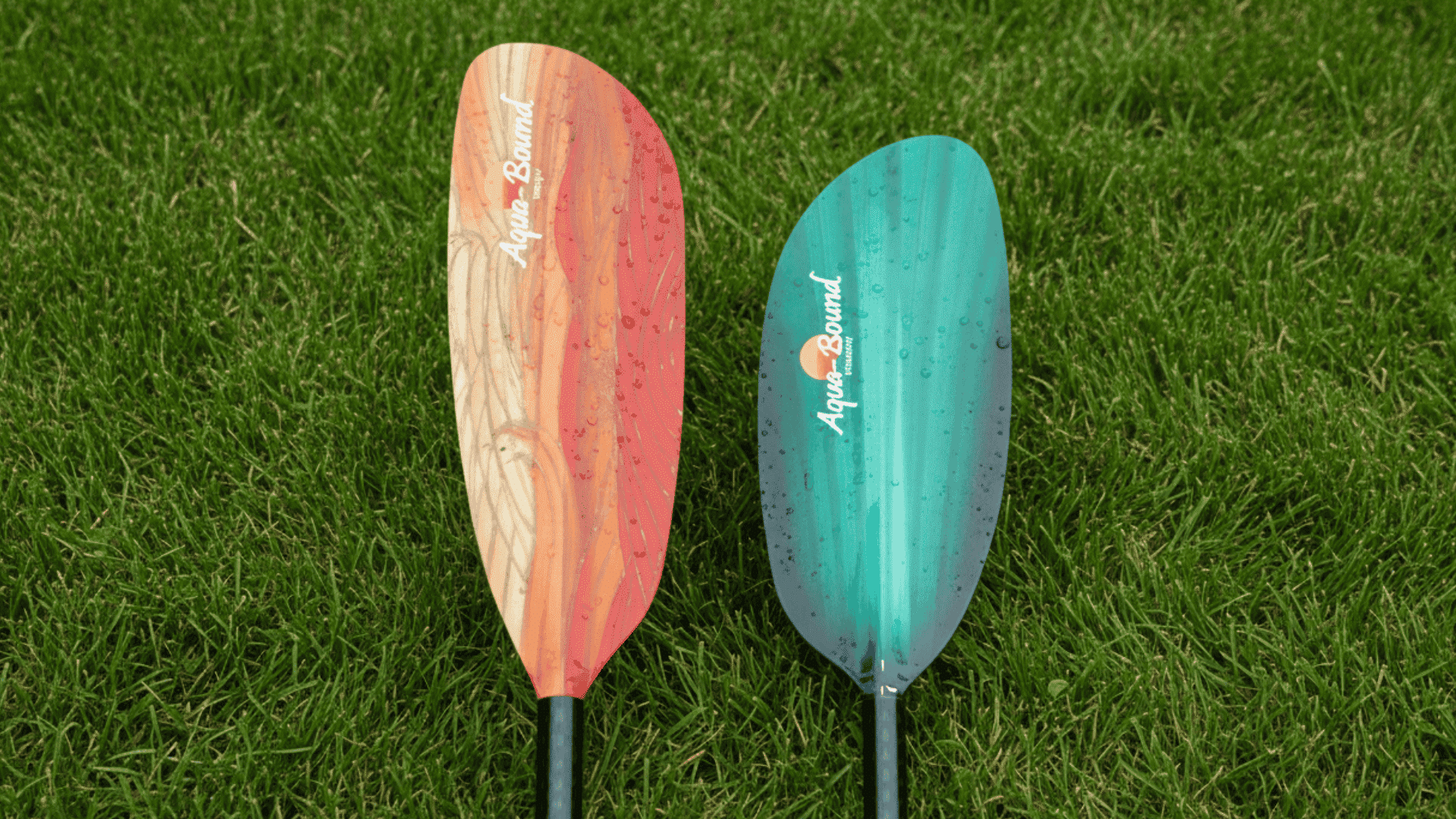
The shape of your paddle blade influences how you move through the water. Blade width, length, and angle all affect stroke power, efficiency, and comfort.
Choosing the right shape depends on your paddling style and where you plan to kayak.
| Blade Type | Shape & Features | Ideal Conditions | Advantages |
|---|---|---|---|
| Low-Angle Blade | Long and narrow; designed for smooth, horizontal strokes | Calm lakes, flatwater, and long-distance paddling | Energy-efficient, reduces fatigue, promotes a steady rhythm |
| High-Angle Blade | Short and wide; suited for vertical, powerful strokes | Fast-moving rivers, choppy water, or tight turns | Powerful strokes, better control, strong acceleration |
Finding the Best Paddle for You
The right paddle turns your kayaking experience. It boosts comfort, efficiency, and control while reducing fatigue and strain on long trips.
- Use the paddle chart wisely: Match your height and kayak width for an accurate starting point.
- Adjust for comfort: Modify the length for your seat height and stroke angle.
- Choose your stroke style: Go low-angle for relaxed paddling or high-angle for speed and power.
- Select the right material: Lightweight carbon reduces fatigue, while fiberglass balances strength and cost.
- Test before buying: Make sure grip, reach, and weight feel natural.
- Refine over time: As skills grow, your ideal paddle length and blade style may change.
Conclusion
Choosing the right kayak paddle is more than just measurements. It is about matching your gear to your body, kayak, and paddling style.
The correct paddle improves every stroke, saves energy, and improves control. Use the size chart as your starting point, then refine your choice by considering paddle type, blade shape, and material.
Test different options until one feels natural and efficient.
Enjoy calm lakes, sea touring, or whitewater paddling; the perfect paddle will make each trip smoother, more comfortable, and more enjoyable, helping you move confidently and effortlessly on the water.







